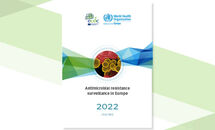Antimicrobial resistance surveillance in Europe 2022 - 2020 data
The results presented in this report are based on antimicrobial resistance (AMR) data from invasive isolates reported to the Central Asian and European Surveillance of Antimicrobial Resistance (CAESAR) network and the European Antimicrobial Resistance Surveillance Network (EARS-Net) in 2021 (data referring to 2020).
Executive summary
Antimicrobial resistance (AMR) remains a major public health concern in the WHO European Region, with estimates from the European Union/European Economic Area (EU/EEA) alone showing that each year more than 670 000 infections are due to bacteria resistant to antibiotics and approximately 33 000 people die as a direct consequence.
This report is the first in a series published jointly by the European Centre for Disease Prevention and Control (ECDC) and the WHO Regional Office for Europe that includes AMR data from invasive isolates in Europe. The report shows that AMR is widespread in the WHO European Region, although the AMR situation varied widely depending on the bacterial species, antimicrobial group and geographical region. A north-to-south and west-to-east gradient was generally observed, with higher AMR percentages in the southern and eastern parts of Europe. Overall in the EU/EEA, AMR percentages for the bacterial species–antimicrobial group combinations under surveillance continue to be high, with carbapenem resistance in Escherichia coli and Klebsiella pneumoniae (K. pneumoniae) and vancomycin resistance in Enterococcus faecium showing a significant increase during 2016–2020. High percentages of resistance to third-generation cephalosporins and carbapenems in K. pneumoniae and high percentages of carbapenem-resistant Acinetobacter species and Pseudomonas aeruginosa in several countries in the European Region are of concern. Effectively tackling AMR in the WHO European Region requires greater efforts and investments.
Download







